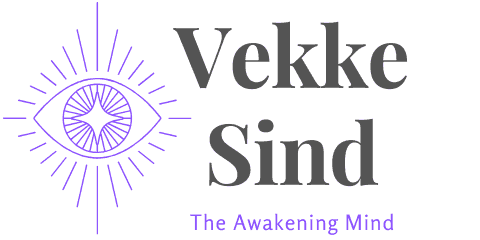Synastry is a fascinating and illuminating study of how individuals interact with one another. It is a branch of astrology that examines the compatibility between two people by comparing their birth charts.
Each individual is born with a personal birth chart, which is a map of the heavens for the moment they take their first breath. Some might say the birth chart has the effect of stamping, or imprinting, the individual with a unique set of personality traits and tendencies.
Synastry, also known as relationship astrology, takes on a more holistic approach in examining the relationship dynamics between two individuals.
It involves comparing all the cosmic forces in the birth charts of two people, which brings to the fore areas of strength and weakness.
By analyzing the planetary positions and aspects of the two charts, astrologers can gain insight into the nature of the relationship, its challenges, and its potential for growth.
Understanding synastry can be a powerful tool for fostering greater intimacy, communication, and fulfillment in even the most complex relationships.
Table of Contents
Understanding Synastry

Synastry is the comparative study of two or more birth charts to understand the dynamics of a relationship. It is a branch of astrology that focuses on the interactions between individuals in a relationship.
Synastry can reveal the strengths and weaknesses of a relationship by examining the planetary positions and aspects in the birth charts of the individuals involved.
Astrology is a complex and nuanced subject that requires a deep understanding of the symbolism and language of the stars.
The astrological birth chart is a map of the heavens at the time of an individual’s birth. It contains information about the position of the planets, the zodiac signs, and the houses of the horoscope.
To understand synastry, it is essential to have a basic understanding of astrology. Astrology is a tool for self-awareness and personal growth. It can help individuals understand their strengths and weaknesses, their personality traits, and their life path.
In synastry, the birth charts of two individuals are compared to identify the areas of compatibility and potential conflict.
The planetary positions and aspects in the birth charts can reveal how the individuals will relate to each other, their communication style, their emotional connection, and their sexual chemistry.
Understanding synastry can be a valuable tool for anyone seeking to improve their relationships. By examining the birth charts of two individuals, it is possible to gain insight into the dynamics of their relationship and identify areas of strength and weakness.
With this knowledge, individuals can work to strengthen their relationships and improve their communication and understanding of each other.
In conclusion, synastry is a powerful tool for understanding the dynamics of a relationship. By examining the planetary positions and aspects in the birth charts of two individuals, it is possible to gain insight into their compatibility and potential conflicts.
With this knowledge, individuals can work to improve their relationships and deepen their understanding of each other.
The Role of Planets in Synastry

When it comes to synastry, the planets play a crucial role in determining the dynamics of a relationship. Each planet represents a different aspect of our personality and influences how we interact with others. Here are some of the most important planets to consider in synastry:
The Sun and Moon
The Sun and Moon are the two most important luminaries in astrology. The Sun represents our ego, our sense of self, and our basic personality traits. The Moon, on the other hand, represents our emotional nature, our instincts, and our subconscious mind.
When the Sun and Moon are in harmony in a synastry chart, it can indicate a strong emotional connection and a deep understanding between two individuals.
Venus and Mars
Venus and Mars are the two planets that represent our romantic and sexual desires. Venus rules over love, beauty, and pleasure, while Mars represents our sexual energy, passion, and drive.
When these two planets are in harmony in a synastry chart, it can indicate a strong physical attraction and a passionate relationship.
Mercury and Saturn
Mercury and Saturn represent our communication styles and our sense of responsibility. Mercury rules over communication, intellect, and logic, while Saturn represents structure, discipline, and responsibility.
When these two planets are in harmony in a synastry chart, it can indicate a strong intellectual connection and a sense of responsibility towards each other.
Jupiter and Neptune
Jupiter and Neptune represent our spiritual and philosophical beliefs. Jupiter represents our sense of optimism, growth, and expansion, while Neptune represents our intuition, creativity, and spirituality.
When these two planets are in harmony in a synastry chart, it can indicate a strong spiritual connection and a shared sense of purpose.
Uranus and Ascendant

Uranus and the Ascendant represent our individuality and our sense of self-expression. Uranus represents our need for freedom, independence, and innovation, while the Ascendant represents our outer personality and our first impression on others.
When these two planets are in harmony in a synastry chart, it can indicate a strong sense of individuality and a shared sense of adventure.
Overall, understanding the role of planets in synastry can help individuals gain insight into their relationships and how they interact with others. By analyzing the placements of the planets in a synastry chart, individuals can gain a deeper understanding of their strengths and weaknesses as a couple.
Significance of Zodiac Signs
Understanding the significance of zodiac signs is crucial when it comes to interpreting synastry charts. Each zodiac sign is associated with specific personality traits, which can impact the way individuals interact with each other.
In this section, we will discuss the significance of fire and air signs, as well as the specific impact of Leo and Scorpio.
Fire Signs
Fire signs (Aries, Leo, and Sagittarius) are known for their passion, energy, and enthusiasm. They tend to be adventurous and impulsive, and they thrive on excitement and new experiences.
When two people with fire signs come together, they can create a dynamic and exciting relationship. However, their fiery nature can also lead to conflicts and disagreements, as both partners may want to be in control.
Air Signs
Air signs (Gemini, Libra, and Aquarius) are known for their intellect, communication skills, and social nature. They tend to be analytical and logical, and they enjoy discussing ideas and theories.
When two people with air signs come together, they can create a relationship based on intellectual stimulation and mutual respect. However, they may struggle with emotional intimacy and may need to work on communicating their feelings to each other.
Leo and Scorpio
Leo and Scorpio are two zodiac signs that have a significant impact on synastry charts. Leo is a fire sign, and Scorpio is a water sign. Leo is known for their confidence, charisma, and leadership skills, while Scorpio is known for their intensity, passion, and emotional depth.
When these two signs come together, they can create a powerful and transformative relationship. However, they may also struggle with power struggles and jealousy, as both signs can be possessive and controlling.
In conclusion, understanding the significance of zodiac signs is essential when it comes to interpreting synastry charts. Fire signs and air signs have different strengths and weaknesses, and Leo and Scorpio have a significant impact on relationships.
By understanding these factors, individuals can gain insight into their relationships and work to build stronger connections with their partners.
Birth Charts and Natal Charts

In astrology, a birth chart and a natal chart are the same thing. They are a map of the sky at the exact moment of a person’s birth.
The chart is divided into 12 sections, each representing a different area of life. The positions of the planets, sun, and moon in these sections can provide insight into a person’s personality, strengths, and challenges.
To create a birth chart, an astrologer needs to know the date, time, and location of the person’s birth.
With this information, they can calculate the exact positions of the celestial bodies at the moment of birth. There are many websites and software programs that can generate a birth chart based on this information.
Natal charts are an essential tool in comparative astrology, as they allow astrologers to compare the charts of two people and determine their compatibility. By examining the positions of the planets in each chart, an astrologer can gain insight into the strengths and challenges of the relationship.
It is important to note that birth charts are not deterministic, and astrology is not a science. The positions of the planets do not dictate a person’s fate or personality but rather provide a framework for understanding their strengths, challenges, and potential.
As such, birth charts and natal charts should be approached with an open mind and a healthy dose of skepticism.
Interpreting Aspects in Synastry
When it comes to understanding how comparative astrology affects relationships, one important tool is the practice of interpreting the aspects between two people’s natal charts, also known as synastry.
In this section, we’ll explore the different aspects of synastry and their significance for relationship compatibility.
Conjunctions
A conjunction occurs when two planets are very close together in the sky, usually in the same sign. This aspect can indicate a strong connection between two individuals, as the planets’ energies merge and amplify the themes associated with both planets.
However, it’s important to note that not all conjunctions are positive, and some can indicate challenges or conflicts in the relationship.
Squares and Oppositions

Squares and oppositions are considered challenging aspects in synastry, as they can indicate tension, conflicts, and opposing energies between two individuals. A square occurs when two planets are 90 degrees apart, while an opposition occurs when two planets are 180 degrees apart.
These aspects can indicate areas where the two individuals have different needs, priorities, or values, and may need to work to find a balance in the relationship.
Trines and Sextiles
Trines and sextiles are considered harmonious aspects in synastry, as they can indicate ease, flow, and compatibility between two individuals. A trine occurs when two planets are 120 degrees apart, while a sextile occurs when two planets are 60 degrees apart.
These aspects can indicate areas where the two individuals have similar needs, priorities, or values, and may find it easy to work together in the relationship.
Overall, interpreting the aspects in synastry can provide valuable insights into the dynamics of a relationship and help individuals understand areas of compatibility and potential challenges. However, it’s important to remember that astrology is just one tool for understanding relationships, and should not be relied on exclusively for making important decisions.
Relationship Dynamics and Compatibility
Synastry astrology is a powerful tool for understanding the complex dynamics between two people and assessing their compatibility.
It involves examining the interplay of planetary placements and aspects between the charts to understand the dynamics and potential challenges within a relationship.
One of the key benefits of synastry astrology is that it can provide invaluable insight into a couple’s future life together. By analyzing the birth charts of both partners, a synastry astrologer can identify potential areas of conflict and offer guidance on how to navigate them successfully.
In a successful relationship, both partners are committed to working together to overcome challenges and build a strong foundation for the future. Synastry astrology can help couples identify areas where they may need to put in extra effort to maintain a healthy and fulfilling relationship.
Compatibility is a crucial factor in any relationship, and synastry astrology can provide valuable insights into the potential for a successful partnership. By examining the planetary placements and aspects between two charts, a synastry astrologer can identify areas of compatibility and potential challenges.
Ultimately, understanding the dynamics of a relationship and assessing compatibility through synastry astrology can help couples build a strong foundation for a successful and fulfilling partnership.
Emotional and Physical Attraction

When it comes to relationships, emotional and physical attraction are two key factors that can either make or break a couple. In synastry, these attractions can be analyzed by comparing the birth charts of two individuals.
Emotional compatibility is determined by the placement of the Moon in each person’s chart. The Moon represents emotions, feelings, and instincts, and its placement can reveal how two people express their emotions and connect on an emotional level.
If the Moons are in compatible signs and houses, there is a greater chance of emotional connection and understanding.
Physical attraction is often associated with the placement of Venus and Mars in the charts. Venus represents love, beauty, and pleasure, while Mars represents passion, desire, and sexual energy.
When these planets are in compatible signs and houses, there is a greater chance of physical attraction and sexual chemistry.
However, it’s important to note that physical attraction is not the only factor in a successful relationship. Emotional connection and compatibility are equally important, if not more so. In fact, a strong emotional connection can enhance physical attraction and lead to a more fulfilling and long-lasting relationship.
It’s also important to remember that synastry is not a definitive predictor of relationship success or failure. It’s simply a tool that can provide insight into the dynamics of a relationship and help individuals understand themselves and their partners better.
Ultimately, the success of a relationship depends on the effort and commitment of both individuals involved.
Communication and Understanding in Relationships
Effective communication is a vital aspect of any successful relationship. In astrology, understanding the communication styles of each partner is crucial for fostering deeper connections and resolving conflicts. Astrology can provide insight into how different individuals communicate and express their love.
Each zodiac sign has unique communication preferences and tendencies. For instance, Aries individuals are known for their direct and assertive communication style, while Taurus individuals tend to be more reserved and communicate through physical touch.
Gemini individuals have a gift for communication and are skilled at expressing their thoughts and feelings through words.
However, miscommunications can arise when partners have different communication styles. For example, a Leo individual may feel frustrated when their partner, who is a Pisces, is not as forthcoming with their emotions.
It is essential to recognize and appreciate these differences to avoid misunderstandings and promote understanding.
Astrology can also provide insight into how individuals process information and make decisions. For instance, an individual with a strong placement in the air signs (Gemini, Libra, Aquarius) tends to be more analytical and logical in their decision-making process.
In contrast, an individual with a strong placement in water signs (Cancer, Scorpio, Pisces) may rely more on intuition and emotions.
Overall, understanding each other’s communication styles and decision-making processes can enhance communication and promote deeper understanding in relationships. By recognizing and appreciating these differences, partners can build stronger connections and resolve conflicts more effectively.
Challenges and Growth in Relationships

Synastry is a powerful tool that can help individuals understand the dynamics of their relationships. However, it is important to note that not all relationships are easy, and challenges will inevitably arise. In fact, some of the most profound personal growth can come from navigating these challenges.
One of the most difficult aspects to handle in synastry is the Saturn opposition Midheaven. This aspect represents depression, restriction, fear of rejection, distancing, as well as commitment. While Saturn aspects are certainly binding, they come with many problems.
In synastry, the difficult aspects are those that create tension, conflict, and challenges in the relationship. The Conjunction, which occurs when two planets are in close proximity to each other, usually within a few degrees, is often a challenging aspect.
This is because the energies of the two planets can become overwhelming, leading to power struggles and a lack of balance in the relationship.
However, it is important to note that these challenging aspects can also lead to growth. By navigating these difficult times together, couples can strengthen their bond and learn more about themselves and each other.
It is through these challenges that individuals can learn to communicate better, set boundaries, and develop a deeper understanding of their partner.
Overall, while synastry can provide insight into the challenges that may arise in a relationship, it is important to remember that these challenges can also lead to personal growth and a stronger, more fulfilling relationship.
Insights from Synastry Chart
A synastry chart is a comparative astrology tool that can provide valuable insights into how two individuals interact with each other. By analyzing the positions of planets and other celestial bodies in both charts, astrologers can deduce compatible and incompatible facets of the relationship.
Here are some insights that can be gained from a synastry chart:
- Planetary Aspects: The aspects between the planets in each chart can reveal important information about the relationship. For example, a harmonious aspect between Venus and Mars can indicate strong physical attraction and a healthy sex life, while a challenging aspect between Saturn and the Moon can suggest emotional distance and difficulty expressing feelings.
- House Overlays: When one person’s planet falls into another person’s house, it can indicate a strong connection in that area of life. For example, if one person’s Mars falls into the other person’s 7th house of partnerships, it can suggest a strong desire for a dynamic and active relationship.
- Synastry Aspects Patterns: Astrologers can also analyze the overall aspect patterns between the two charts to gain a deeper understanding of the relationship. For example, a Grand Trine aspect pattern between the Sun, Moon, and Venus can suggest a harmonious and loving relationship, while a T-Square aspect pattern between Mercury, Uranus, and Pluto can indicate communication challenges and power struggles.
- Composite Chart: In addition to the synastry chart, astrologers can also create a composite chart that represents the relationship as a whole. This chart can reveal important information about the purpose and potential of the relationship, as well as any challenges that may arise.
Overall, a synastry chart can provide valuable insights into the dynamics of a relationship and help individuals understand themselves and their partners on a deeper level.



